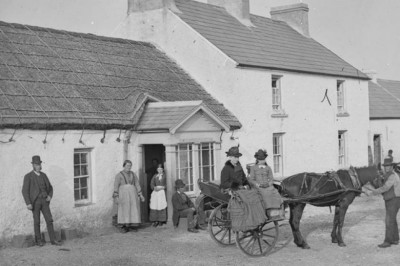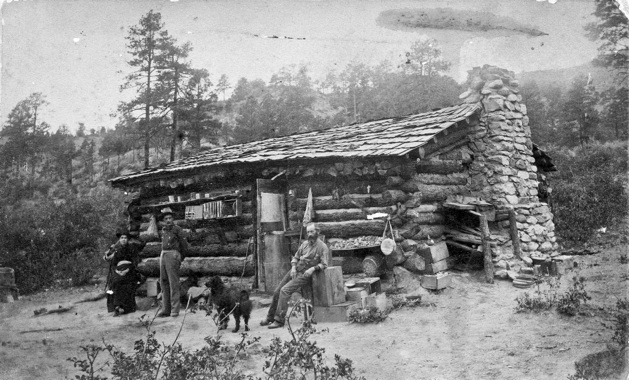Stockpiling food and other supplies is central to being prepared for an emergency, but there are some foods – such as meat — that are harder to pack for long-term storage than others.
I’m sure there are some people out there who think that they can live off of rice and beans, getting all the protein they need from the beans. While that may be technically true, I, for one, don’t want to try it. Not only am I not a huge fan of beans, but I also am a huge fan of meat. So, I need to have ways of preserving that meat and ensuring that I’ll have it available when a disaster strikes. Fortunately, there are actually a number of ways of preserving meat which work quite well — ways our ancestors used.
The Key to Preserving Meat – Salt
If there’s any one key ingredient for preserving meat, it’s salt. Salt is one of the few natural preservatives, and it works ideally with meat. Salt draws the moisture out of the cells in the meat in a process known as osmosis. Essentially, osmosis is trying to equalize the salinity on both sides of the cell wall (which is a membrane). So, water leaves the cell and salt enters it. When enough water leaves the cell, the cell dies.
Discover 1,147 Secrets Of Successful Off-Grid Living!
This happens with bacteria, as well. Any bacteria that are on the surface of the meat go through the same osmosis process that the cells of the meat do. This dehydrates the bacteria to the point of death. Unfortunately, the salt won’t travel all the way through the meat quickly, killing off the bacteria, so salt is usually used in conjunction with other means of preserving.
1. Canning
Probably the least complex form of preserving meat is canning it. Canning preserves any wet food well through a combination of killing off existing bacteria in the food and container, while providing a container that prevents any further bacteria from entering.
Canning uses heat to kill off bacteria. All you have to do is raise the temperature of the bacteria to 158 degrees Fahrenheit, and it dies. This is called “pasteurizing,” so named for Louis Pasteur, a French microbiologist who discovered the process in the mid-1800s. To kill viruses, you raise the temperature a bit more, to 174 degrees Fahrenheit.
The only problem with canning meat is that it has to be canned at a higher temperature than fruits and vegetables. This is accomplished by canning it in a pressure canner, essentially a large pressure cooker. The higher atmospheric pressure inside the pressure canner causes the water to boil at a higher temperature, thus cooking the meat.
Meats that are canned tend to be very well-cooked. You have to at least partially cook them before canning, and then the 90 minutes they spend in the canner cooks them further. That makes for very soft meats, but they do lose some of their texture.
2. Dehydrating
Dehydrating takes over where salt leaves off, removing much more moisture from the meat than just salting it will. However, dehydrating of meats is usually combined with salting the meat with a rub or marinating it with a salty marinade. The salt on the outside of the meat attacks any bacteria that approach the meat once it is dehydrated. Meat that is dehydrated without salt won’t last, as the bacteria can attack it.
Do It Yourself With The ‘Complete Book of Butchering, Smoking, Curing, and Sausage Making’
 The American Indians used dehydrating as a means of preserving meat, making jerky. While a very popular snack food today, jerky is excellent survival food. Not only will it keep without refrigeration, but it can be rehydrated for use in soups and stews. That takes it beyond being a snack and makes it possible to use jerky for part of your meals.
The American Indians used dehydrating as a means of preserving meat, making jerky. While a very popular snack food today, jerky is excellent survival food. Not only will it keep without refrigeration, but it can be rehydrated for use in soups and stews. That takes it beyond being a snack and makes it possible to use jerky for part of your meals.
Dehydrating can either be done in the sun, in an electric dehydrator or in a solar dehydrator. The American Indians used the sun, hanging strips of meat on poles. However, there is a risk in dehydrating meat as they did, in that the meat may start to spoil before it dries. All fat should be removed from the meat, as the fat can turn rancid.
3. Salt fish
Salt fish is another means of dehydrating meat, something like making fish jerky. It has been done for centuries and is still a popular dish in some countries. Salt fish uses the concept that the salt draws the water out of the fish, starting the drying process. This is accomplished by packing the fish fillets in alternating layers of salt and fish. Then, the fish is sun dried to complete the process.
4. Smoking
Smoking is another method that combines salt with a secondary method of preservation. For preserving, one must use hot smoking, which cooks the meat, and not just cold smoking, which is used to flavor the meat. Typically, the process consists of three major steps: soaking the meat in brine (salt water), cold smoking and then hot smoking.
When meat is smoked, the proteins on the outer layer of the meat form a skin, called a pellicle. This is basically impervious to any bacteria, protecting the meat. However, if the meat is cut, such as to cut off a steak from a chunk of smoked meat, the open surface can be attacked by bacteria.
In olden times, this problem was solved by hanging the meat in the smokehouse once again. In some homes, the kitchen chimney was large enough to be used as a smokehouse, and meat was hung in it, where the constant smoke helped to protect it. Most of the fat was usually trimmed off the meat, so that it would not turn rancid.
 One nice thing about smoking meats, besides that it adds that lovely smoke flavor, is that the smoking process is a slow-cooking process, much like cooking meat in a crockpot. This helps to break down the fiber in the meat, turning otherwise tough cuts of meat tender.
One nice thing about smoking meats, besides that it adds that lovely smoke flavor, is that the smoking process is a slow-cooking process, much like cooking meat in a crockpot. This helps to break down the fiber in the meat, turning otherwise tough cuts of meat tender.
5. Curing
The deli meats we pay top dollar for today are actually cured meats. Curing is a process that combines smoking, with salt, sugar and nitrites. Together, these act as an almost perfect preservative, protecting the meat from decay-causing bacteria. Technically, smoking is a type of curing, but normally when we talk about curing, we’re referring to what is known as “sausage curing,” which is the method used for making most sausage and lunch meat.
The curing process is all about killing the bacteria and is done mostly by the addition of salt to the meat. For sausage curing, the meat is ground and then mixed with fat, spices salt and whatever else is going to be used (some sausage includes cheese). It is then allowed to sit, in order for the salt to permeate all the meat and kill the bacteria. Cooking or smoking is accomplished once the curing is done.
Curing meats, like smoking, tenderizes it. So, traditionally, the tougher, lower grade cuts of meat were usually used for the making of most of what we know today as lunch meats. One nice thing about properly cured meats is that they can be left out, with no risk of decay, even when they have been cut. That is, if it is properly cured. I wouldn’t try that with commercially prepared lunchmeats, as they are not cured with the idea of leaving them out.
What meat-preserving methods would you add to this list? Share your ideas in the section below:
Learn How To ‘Live Off The Land’ With Just Your Gun. Read More Here.
 Off The Grid News Better Ideas For Off The Grid Living
Off The Grid News Better Ideas For Off The Grid Living




